-
Dally, Frederick (1838, Southwark, London, England–1914, Wolverhampton, Staffordshire, England)
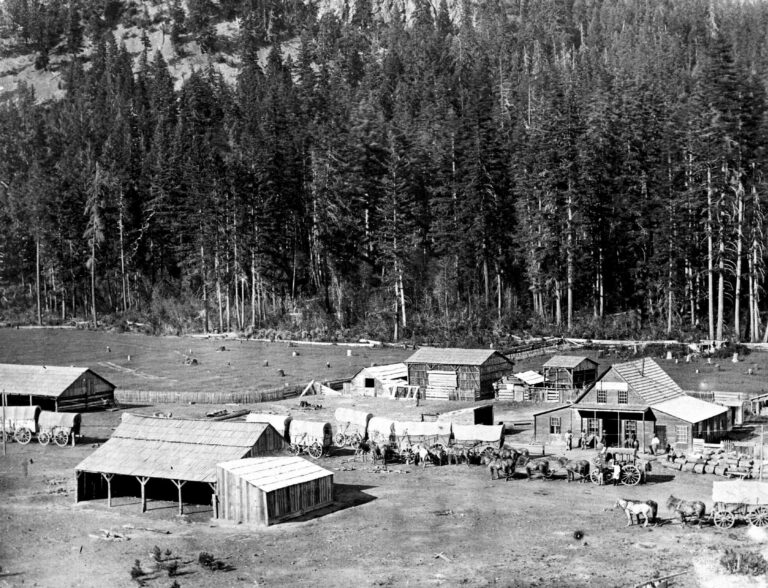
Dally moved to British Columbia in 1862 during the gold rush. After working as a retailer, he embarked on a new career as a photographer. From 1866 to 1870, he ran a studio in Victoria and produced portraits, but he also travelled around B.C. to create picturesque landscapes, photographs of colonial settlements, and images of First Nations communities that would appeal to nineteenth-century consumers. Many of his images and commercial albums are now held in the B.C. Archives in Victoria and the Royal Collection Trust in London. In 1870, Dally sold off his equipment and negatives, moving to the U.S. to study dentistry; he later returned to England. Hannah and Richard Maynard were among those who purchased Dally’s photographs of Indigenous subjects, which they continued to print and sell to tourists at their studio.
Image: Frederick Dally, 43 miles above Yale; an evening encampment at Boothroyds, Fraser River wagon road, c.1867, glass plate negative, BC Archives, Royal BC Museum, Victoria.
For further reading, see:
Birrell, Andrew. “Frederick Dally: Photo Chronicler of B.C. a Century Ago.” Canadian Photography, February 1977, 14–19.
Neering, Rosemary. “Accidental Photographer (Frederick Dally).” Beautiful British Columbia 38, no. 2 (Summer 1996): 18–23.
Schwartz, Joan. “Frederick Dally.” In Encyclopedia of Nineteenth-Century Photography, edited by John Hannavy, 377. New York: Routledge, 2007.
Williams, Carol J. Framing the West: Race, Gender, and the Photographic Frontier in the Pacific Northwest. Oxford: Oxford University Press, 2003, 67.

-
de Courcy, Michael (b.1944, Montreal)
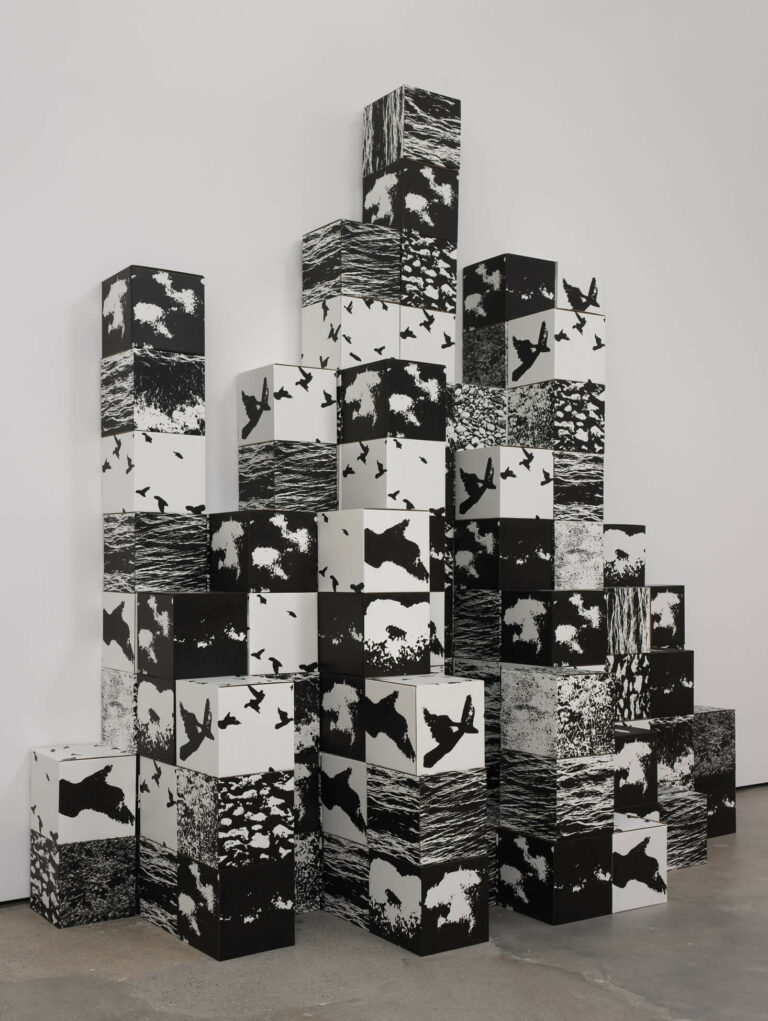
De Courcy became involved with the Vancouver artist collective Intermedia in 1968. His photographic work is conceptual, socially engaged, and often collaborative, such as Background/Vancouver, 1972, a photographic map of the city by a group of artists. For the landmark MoMA exhibition, Photography into Sculpture, 1970, de Courcy sent four hundred silkscreened boxes that were to be randomly stacked in the gallery by custodians. De Courcy co-curated and published B.C. Almanac(h) C-B, a collection of artists books by fifteen West Coast artists including Judith Eglington, Roy Kiyooka, N.E. Thing Co., and Christos Dikeakos.
Image: Michael de Courcy, Silkscreened Box Untitled, 1970–2011, 100 photo-silkscreened corrugated cardboard boxes, 30.5 x 30.5 x 30.5 cm each.
For further reading, see:
“Michael de Courcy interview with Mary Statzer.” In The Photographic Object 1970, edited by Mary Statzer, 152. California: University of California Press, 2016.
Presentation House Gallery. B.C. Almanac(h) C-B. North Vancouver: Presentation House Gallery, 2015.

-
de Visser, John (1930, Veghel, Netherlands–2022, Cobourg, Ontario)
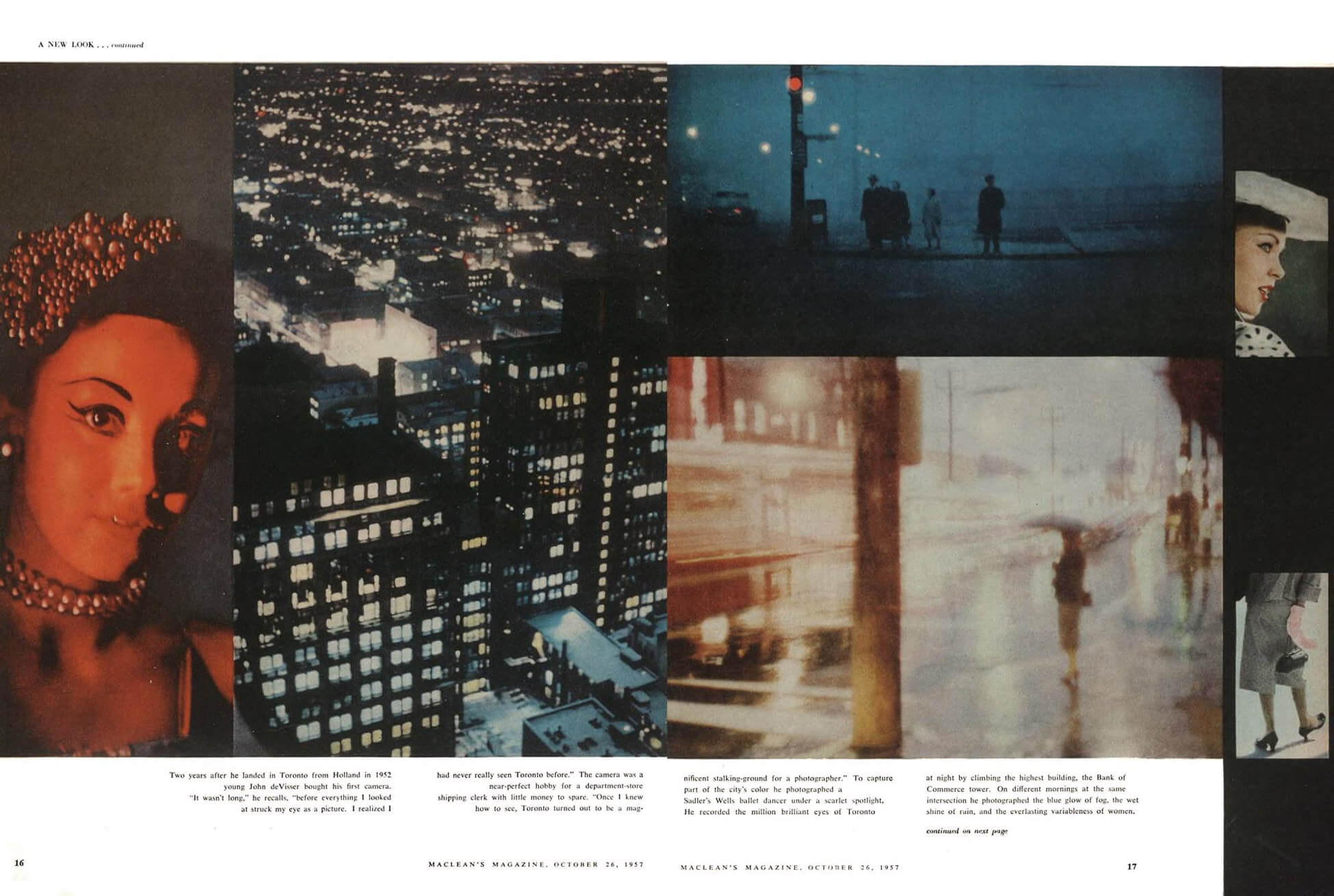
De Visser immigrated to Canada in 1952, where he has had a prolific career focused on Canadian landscapes, architecture, and material culture. Maclean’s magazine was the first to publish his work, a collection of modernist colour photos of Toronto, in 1957. De Visser went on to work as a freelance photographer in Toronto while also publishing several books of his own. He participated in the National Film Board’s publication Canada: A Year of the Land (1967). All told, his photographs have illustrated more than sixty books, including the bestselling This Rock within the Sea (1976) by Farley Mowat.
Image: John de Visser, spread of a photo-essay on Toronto entitled, “A New Look at a Controversial City,” in Maclean’s, October 26, 1957, 16–17.
For further reading, see:
De Visser, John. “A New Look at a Controversial City.” Maclean’s, October 26, 1957, 14–23.
———. Montréal, un portrait. Toronto: Key Porter Books, 1988.
———. Toronto. Toronto: Oxford University Press, 1975.
———. Newfoundland and Labrador. Toronto: Oxford University Press, 1979.
Mowat, Farley. This Rock within the Sea. Toronto: McClelland & Stewart, 1976.

-
Denniston, Stan (b.1953, Victoria)

Denniston is a Toronto-based art restorer and conceptual artist who uses photography to explore historical and cultural narratives, truth and fiction, and the limits of representation. Denniston’s early works delve into the practice of memory-work (Reminders, 1978–82) and the relationship between collective trauma, personal recollection, and the media (Dealey Plaza/Recognition and Mnemonic, 1983). How to Read, 1984–86, examined memory through travel photography.
Image: Stan Denniston, Dealey Plaza/Recognition and Mnemonic, 1983, colour and black and white photographs, variable dimensions, Museum London. Installation photograph at YYZ Artists’ Outlet by Peter MacCallum. © Stan Denniston / CARCC Ottawa 2023.
For further reading, see:
Denniston, Stan. Stan Denniston. Victoria: Art Gallery of Greater Victoria, 1983. Exhibition catalogue.
Mays, John Bentley. “Denniston’s Double-Takes Illustrate Visual Memory.” Globe and Mail, April 22, 1980, 12.

-
Dickson, Jennifer (b.1936, Piet Retief, South Africa)
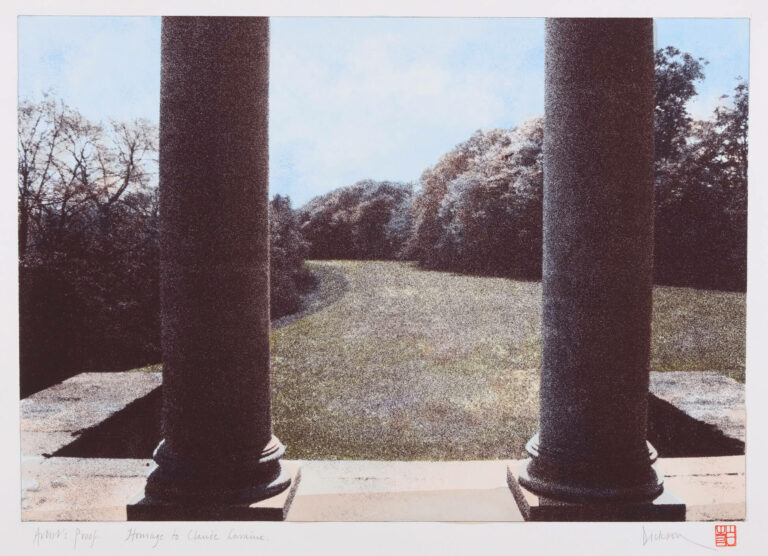
Dickson immigrated to Canada in 1969 after studying at Goldsmiths’ College School of Art in London and working in a print studio in Paris. In 1969 she was elected to the Royal Academy of Arts in London. Her work combines techniques of photography, etching, photocopying, and watercolour, as well as imagery drawn from historical landscapes and classical art. The National Film Board of Canada supported two early projects: The Secret Garden, 1976, and The Earthly Paradise, 1980, which was shown in Paris.
Image: Jennifer Dickson, THE EARTHLY PARADISE: Homage to Claude Lorraine, 1980, mezzotint and watercolour on paper, 56.5 x 76.5 cm, Agnes Etherington Art Centre, Kingston. © Jennifer Dickson / CARCC Ottawa 2023.
For further reading, see:
Dickson, Jennifer. The Hospital for Wounded Angels. Erin: Porcupine’s Quill, 1987.

-
Dikeakos, Christos (b.1946, Thessaloniki, Greece)
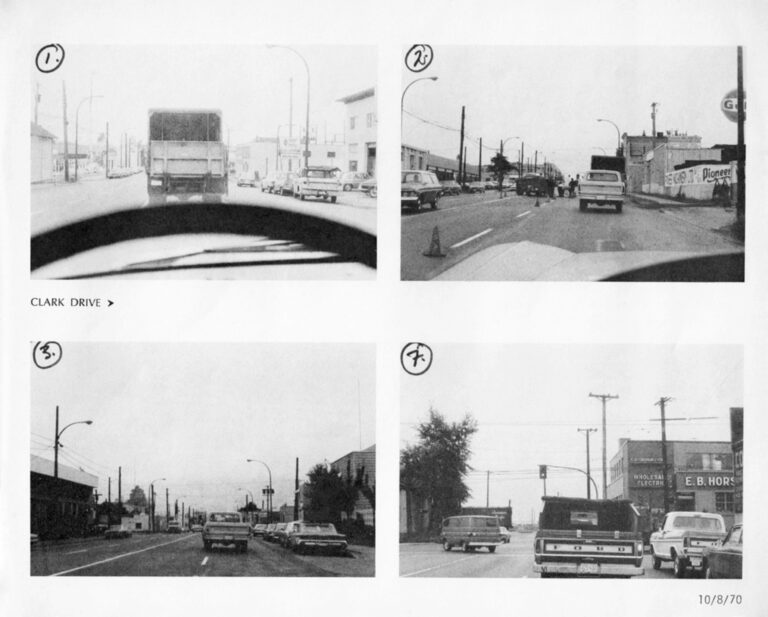
Dikeakos immigrated to Canada in 1956 and was involved in Vancouver’s conceptual art scene in the 1960s and 1970s. Like others in this circle, he trained his camera on the city to explore ideas of place, history, urban development, and the environment. His photo book, Instant Photo Information, 1969, was shown as part of the exhibition, B.C. Almanac(h) C-B, produced by the National Film Board of Canada. He experimented with techniques and formats, including collage and panorama (False Creek Panorama, 1983–85).
Image: Christos Dikeakos, Instant Photo Information, BC Almanac, c.1970, black and white photo print, Morris and Helen Belkin Art Gallery Archives, University of British Columbia, Vancouver.
For further reading, see:
Dikeakos, Christos, Scott Watson, and Robin Blaser. Christos Dikeakos. Vancouver: Vancouver Art Gallery, 1986. Exhibition catalogue.
Wallace, Ian. “Photoconceptual Art in Vancouver.” In 13 Essays on Photography, edited by Geoffrey James, 94–112. Ottawa: Canadian Museum of Contemporary Photography, 1988.
Wallace, Keith, Christos Dikeakos, Patricia A. Berringer, and Linda Milrod. Christos Dikeakos: Sites and Place Names. Vancouver: Contemporary Art Gallery, 1992.

-
Dille, Lutz (1922, Leipzig, Germany–2008, France)
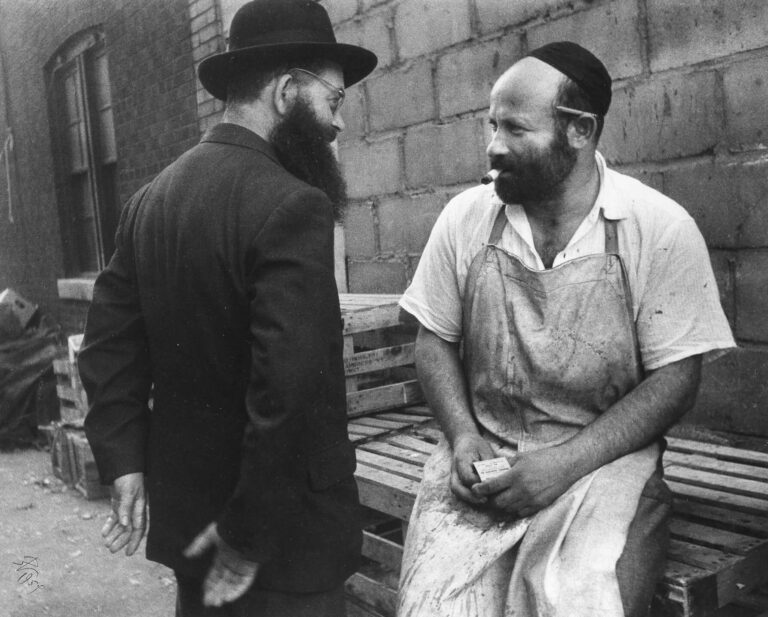
Dille was a street photographer, photojournalist, documentary photographer, and filmmaker. During the Second World War, Dille worked as a reconnaissance photographer for Germany. Based in Canada from 1951 to 1980, he lived in Hamilton, Toronto, and Montreal, and travelled frequently, producing lively street photographs and working on commissions for the CBC and other media outlets. In 1967, the National Film Board of Canada featured his work in the exhibition The Many Worlds of Lutz Dille.
Image: Lutz Dille, Jewish Market, Toronto, 1954, gelatin silver print, 18.4 x 24.1 cm.
For further reading, see:
Dille, Lutz, and Lorraine Monk. The Many Worlds of Lutz Dille. Ottawa: National Film Board of Canada, 1967.
Eberle, Martin. On the Street: Photographs of the 1950s and 1950s by Lutz Dille. Germany: Stadtisches Museum, 2004.
Kunard, Andrea. Photography in Canada: 1968–2000. Ottawa: National Gallery of Canada, 2017, 68.
Payne, Carol. The Official Picture: The National Film Board of Canada’s Still Photography Division and the Image of Canada, 1941–1971. Montreal and Kingston: McGill-Queen’s University Press, 2013, 50.

-
Donovan, Duncan (1857, Alexandria, Ontario–1933)
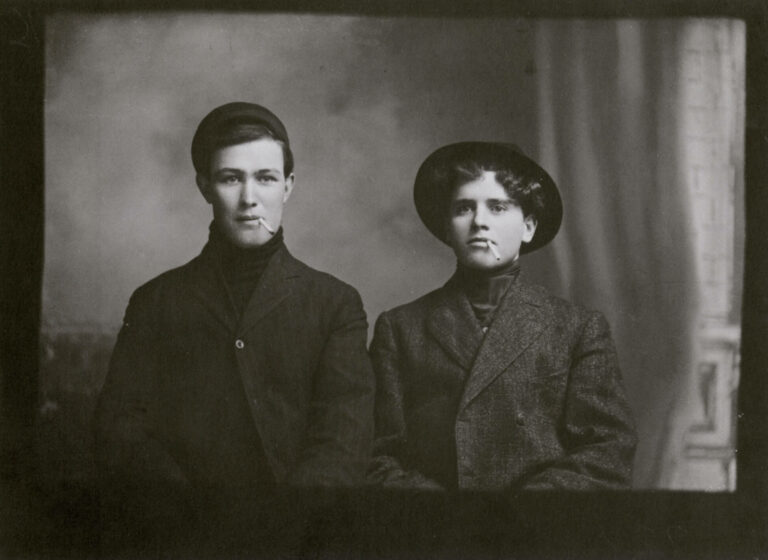
Donovan spent his career as a small-town photographer in eastern Ontario at a time when photographers were a mainstay of most communities. He started as an itinerant tintype photographer travelling by wagon to photograph in a tent at country fairs before partnering and then owning and operating his own studio for more than a quarter century. What sets Donovan apart from his contemporaries is the quality of his work. The Archives of Ontario salvaged a selection of his badly damaged plates in the 1970s and, even in contrast to modern prints, they are dramatically lit, richly textured, and economically composed.
Image: Duncan Donovan, Untitled, July 1907, Nor’Westers and Loyalist Museum, Williamstown.
For further reading, see:
Harper, Jennifer. City Work at Country Prices: The Portrait Photographs of Duncan Donovan. Toronto: Oxford University Press, 1977.

-
Dossetter, Edward (1843, London, England–1919, Ramsgate, Kent, England)
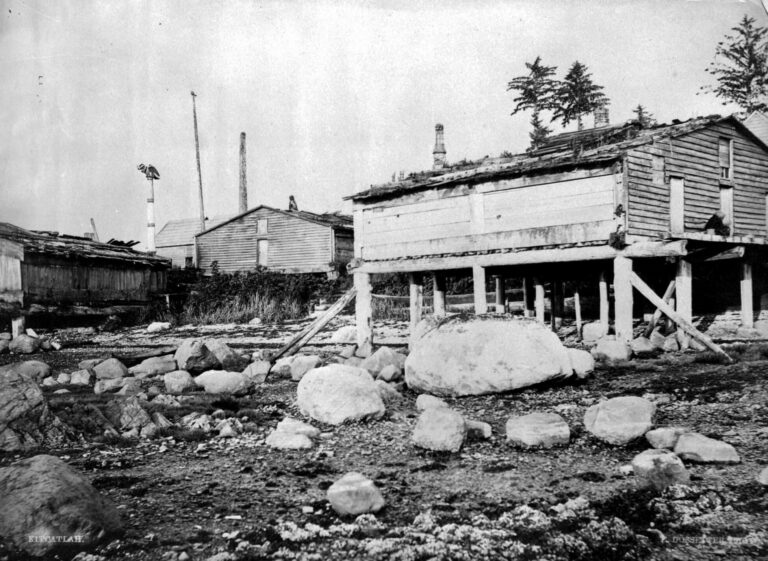
Dossetter was a British photographer who was active in British Columbia between 1881 and 1890. In 1881 he joined Dr. I.W. Powell, the Superintendent for Indian Affairs, on an inspection tour of First Nations villages on the West Coast, producing landscapes and portraits of Indigenous peoples and government officials. Images from this tour are held at the British Columbia Provincial Archives in Victoria.
Image: Edward Dossetter, Kitkatla, 1881, graphic material, BC Archives, Royal BC Museum, Victoria.
For further reading, see:
Savard, Dan. “Changing Images: Photographic Collections of First Peoples of the Pacific Northwest Coast Held in the Royal British Columbia Museum, 1860–1920.” BC Studies 145 (Spring 2005): 55–96.
Williams, Carol J. Framing the West: Race, Gender, and the Photographic Frontier in the Pacific Northwest. Oxford: Oxford University Press, 2003.

-
Douglas, Stan (b.1960, Vancouver)
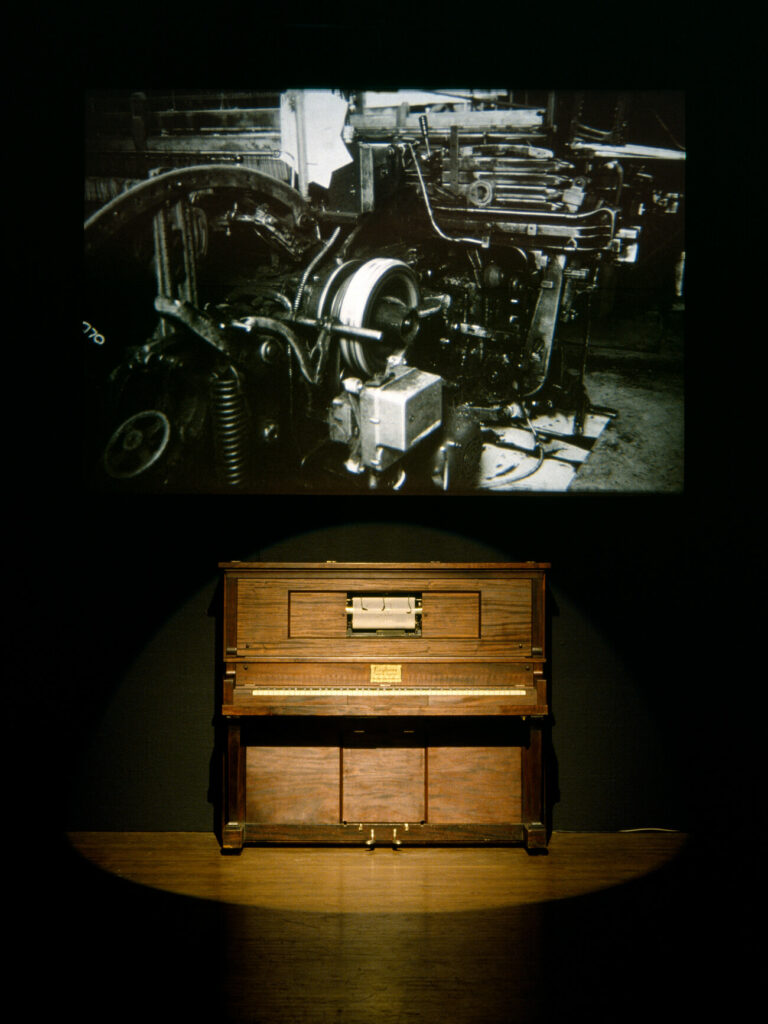
Douglas is an internationally recognized Vancouver-based artist working primarily in photography, video, and installation. His work explores moments of social transformation through the creation of speculative histories. Douglas’s career began in the 1980s when he created multimedia installations using projected images (Slideworks, 1983; Deux Devises, 1983; Onomatopoeia, 1985–86) and video art interventions for television (Television Spots, 1987–88). He is the recipient of numerous honours, including the 2013 Scotiabank Photography Award, and was chosen to represent Canada at La Biennale di Venezia 59 (2022).
Image: Stan Douglas, Onomatopoeia, 1985–86, 5mm slides transferred to 4k video, 88-note player piano, player piano roll, optical trigger device, screen, 6:07 min each rotation, black and white, sound, one music roll, overall dimensions variable.
For further reading, see:
Christ, Hans D., and Iris Dressler, eds. Stan Douglas: Past Imperfect—Works, 1986–2007. Stuttgart: Hatje Cantz Verlag, 2008.
Nichols, Miriam. Stan Douglas: Television Spots. Vancouver: Contemporary Art Gallery, 1988.

-
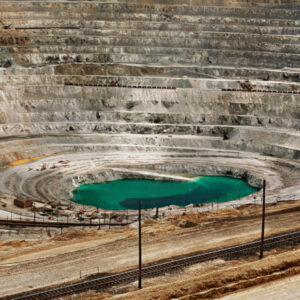 About the Authors
About the Authors
This book is written by art historians Sarah Bassnett and Sarah Parsons.
-
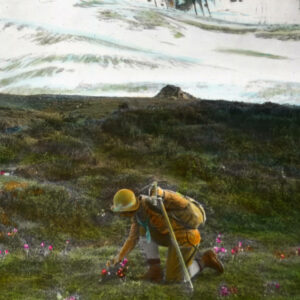 More Online Art Books
More Online Art Books
Read online or download the ACI’s incredible library of art books for free in French and English.
-
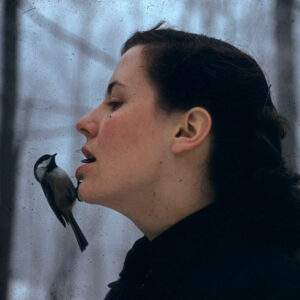 Preface
Preface
Photography has become so thoroughly integrated into our everyday experience that it may be hard to imagine life without it.
